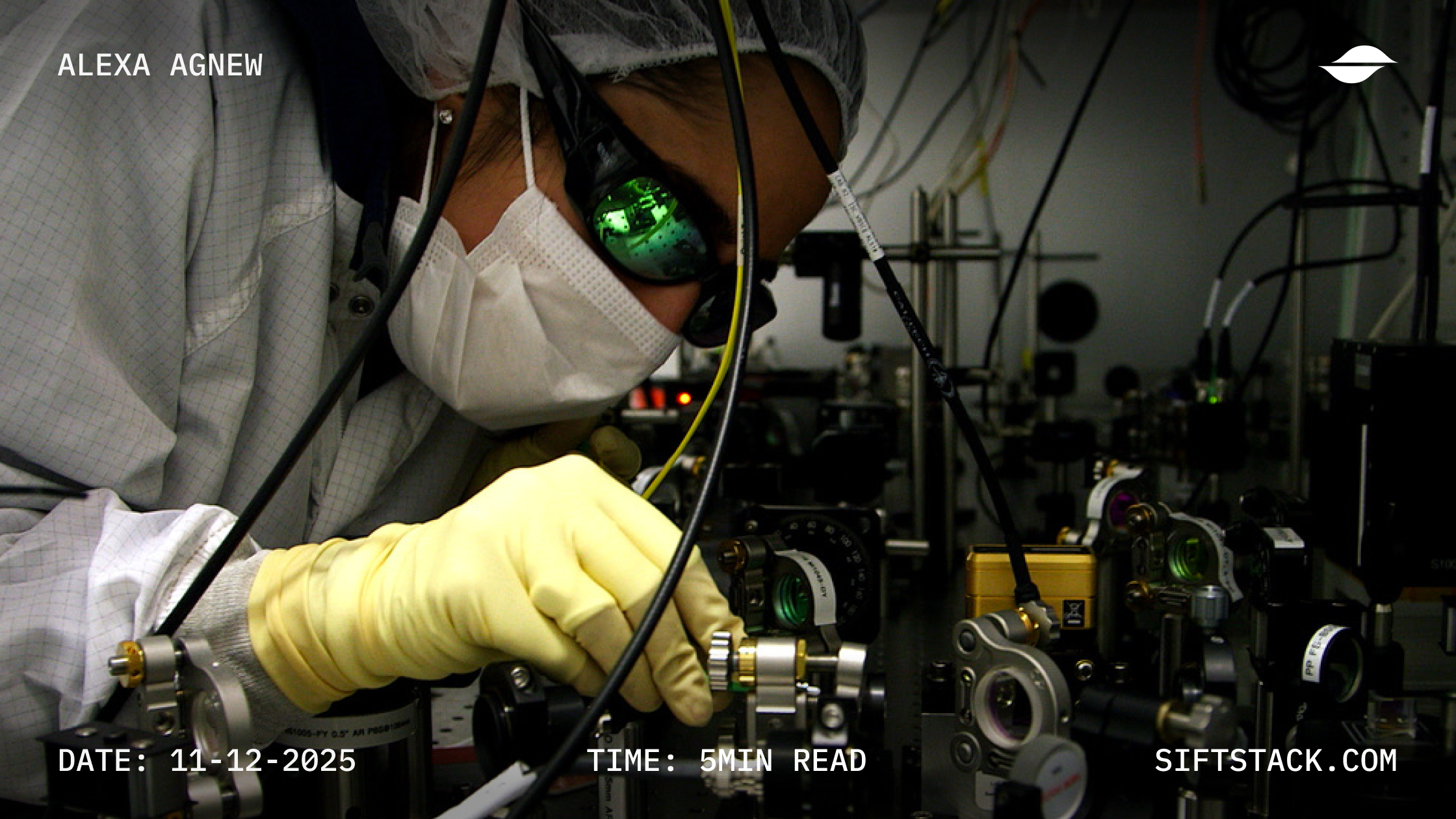From product manager to software engineer in aerospace
Alexa Agnew is a Software Engineer at Sift, where she brings deep experience from the front lines of hard tech and product development. Before transitioning into engineering, she led analytics and infrastructure products at ABL Space Systems and Carta, and earlier worked as a quantum engineer and deployment lead at Rigetti Computing. With a PhD in physics from Columbia, where she conducted research at the Nobel Prize–winning LIGO lab, and a long-standing interest in system design, Alexa recently made the leap from product management to full-time software development at Sift to build the tools that accelerate some of the most ambitious hardware programs in the world.
Trading roadmaps for pull requests
I’ve always loved building things, and in my past product roles, I kept finding myself most energized when I could actually help implement a feature or fix a bug myself. I finally decided to make the leap: instead of just managing the product, I wanted to help write the code.
Sift made that possible. I originally applied as a product manager, but through the interview process, I realized I was ready to pivot, and Sift was open to it. The team didn’t just accept the change; they supported it. They gave me access to tools like Cursor and ChatGPT, provided mentorship, and structured my work so I could learn on the job without being on an island. I’ve never seen a company embrace growth in this way.
A platform I believed in before I joined
When I was interviewing, three things really stood out to me.
- First, the product and mission. I had worked on data infrastructure at ABL and loved building software that supported aerospace engineers. Sift felt like a natural next step: a product I already believed in, at a company with the right velocity.
- Second, the pivot. Sift was by far the most supportive of my move into engineering. They worked with me during the interview process transition and were the most supportive of all the companies I was speaking with.
- Lastly, the size and space of the company. We’re SaaS for hardware, which is unique. You get the energy of a fast-moving software company with the domain complexity of hard tech. That’s rare and really fun.
At Sift, we’re building tools that support engineers who are literally firing engines and preparing vehicles for flight.
From meeting rooms to code commits
The biggest adjustment has honestly been working remotely as a full-time engineer. My calendar used to be wall-to-wall meetings. Now I’ll look up and realize I’ve spent all day in code. It’s a different pace, and while I love the focus, I do sometimes miss the social buzz of not being in the office with everyone. Sift schedules an in-office week every other month for full company in-office collaboration, so this helps tremendously.
The access to help at Sift is still great. I can always Slack someone or jump on a Google Meets, and tools like autocomplete, Cursor, and ChatGPT have been fantastic to use while working. They’re like co-pilots with just enough guidance to get moving, and I know enough to catch when they’re wrong.
Why infrastructure is never just code
I’ve always been drawn to system design that holds up under real-world pressure. Infrastructure that survives edge cases, scales with customers, and evolves with new demands. At Sift, we’re building tools that support engineers who are literally firing engines and preparing vehicles for flight. That means every design decision matters. You have to think about observability, data integrity, latency, and failover and do all of this while supporting teams that don’t have time to click around and debug tooling.
What excites me is watching senior engineers think beyond code. They talk in terms of workflows, constraints, and tradeoffs. That mindset is what I want to learn, and it’s why this role has been such a growth opportunity.
I saw engineers using Sift while they run critical operations, debugging anomalies, correlating telemetry, and checking outcomes in real time. They depend on it to move forward.
Advice for new hires? Visit a customer.
One of the best things I did early on was shadow a customer during an integration test. It completely shifted my perspective. I saw engineers using Sift while they run critical operations, debugging anomalies, correlating telemetry, and checking outcomes in real time. They depend on it to move forward.
What surprised me was how differently they used the product compared to how we imagine internally. They skip steps, take shortcuts, and push the limits of what the UI lets them do. That kind of firsthand exposure is hard to replicate and incredibly useful for both engineering and product design.
The more time you spend inside the app, the more questions you’ll have. Asking those questions early is how you ramp fastest. People here are generous in providing context. Take advantage of that.
What’s next for me?
Professionally, I want to keep leveling up as an engineer. Personally, I want to answer that long-standing question I’ve had: do I want to stay in product, or go deep into engineering? Sift gives me the chance to find out.
I’m excited about where the company is headed. We’re at a really interesting intersection, between ground software and data analysis, between aerospace and whatever comes next. I can’t wait to see how we grow.
Review open career positions at Sift.



